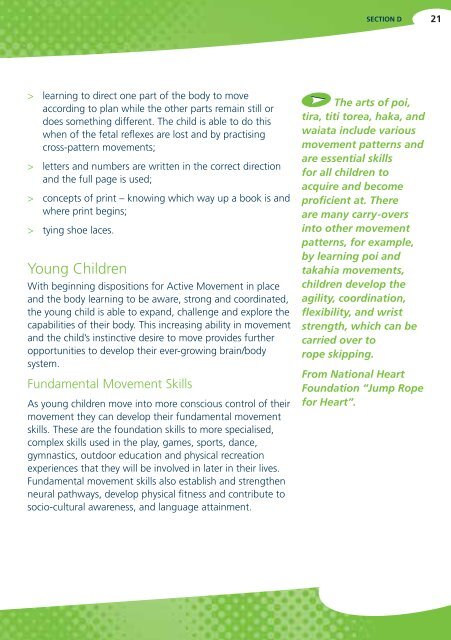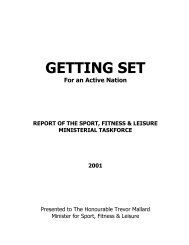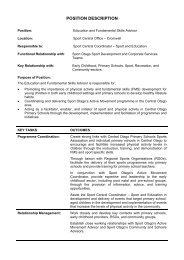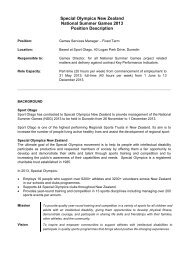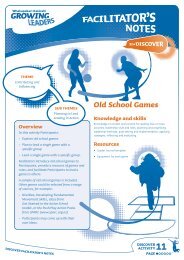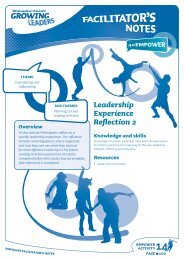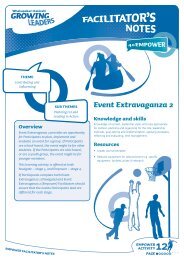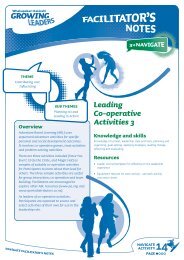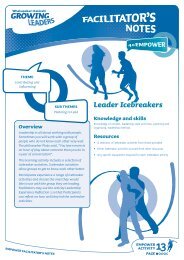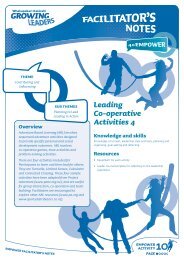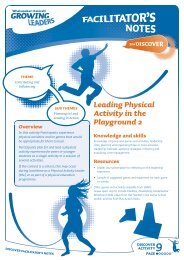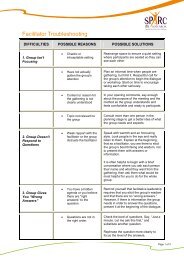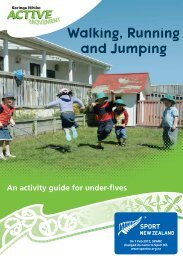An Introduction to Active Movement Koringa Hihiko - Sport New ...
An Introduction to Active Movement Koringa Hihiko - Sport New ...
An Introduction to Active Movement Koringa Hihiko - Sport New ...
Create successful ePaper yourself
Turn your PDF publications into a flip-book with our unique Google optimized e-Paper software.
SECTION D<br />
21<br />
> learning <strong>to</strong> direct one part of the body <strong>to</strong> move<br />
according <strong>to</strong> plan while the other parts remain still or<br />
does something different. The child is able <strong>to</strong> do this<br />
when of the fetal reflexes are lost and by practising<br />
cross-pattern movements;<br />
> letters and numbers are written in the correct direction<br />
and the full page is used;<br />
> concepts of print – knowing which way up a book is and<br />
where print begins;<br />
> tying shoe laces.<br />
Young Children<br />
With beginning dispositions for <strong>Active</strong> <strong>Movement</strong> in place<br />
and the body learning <strong>to</strong> be aware, strong and coordinated,<br />
the young child is able <strong>to</strong> expand, challenge and explore the<br />
capabilities of their body. This increasing ability in movement<br />
and the child’s instinctive desire <strong>to</strong> move provides further<br />
opportunities <strong>to</strong> develop their ever-growing brain/body<br />
system.<br />
Fundamental <strong>Movement</strong> Skills<br />
As young children move in<strong>to</strong> more conscious control of their<br />
movement they can develop their fundamental movement<br />
skills. These are the foundation skills <strong>to</strong> more specialised,<br />
complex skills used in the play, games, sports, dance,<br />
gymnastics, outdoor education and physical recreation<br />
experiences that they will be involved in later in their lives.<br />
Fundamental movement skills also establish and strengthen<br />
neural pathways, develop physical fitness and contribute <strong>to</strong><br />
socio-cultural awareness, and language attainment.<br />
The arts of poi,<br />
tira, titi <strong>to</strong>rea, haka, and<br />
waiata include various<br />
movement patterns and<br />
are essential skills<br />
for all children <strong>to</strong><br />
acquire and become<br />
proficient at. There<br />
are many carry-overs<br />
in<strong>to</strong> other movement<br />
patterns, for example,<br />
by learning poi and<br />
takahia movements,<br />
children develop the<br />
agility, coordination,<br />
flexibility, and wrist<br />
strength, which can be<br />
carried over <strong>to</strong><br />
rope skipping.<br />
From National Heart<br />
Foundation “Jump Rope<br />
for Heart”.


